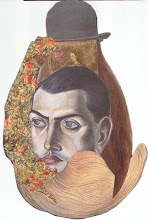Monday, October 12, 2015
Novel Review: The Race for Paris
World War II melodrama The Race for Paris works as a series of emotionally charged snapshots of the culture of journalism at a moment when truly mass media was being born. At its best the book moves at an exciting pace and weaves battlefield calamities, professional ambition, and personal feeling into its most resonant scenes.
The main character, Jane, is a newspaper correspondent from Nashville, Tennessee and arrives in France after the D-Day landings to file stories from a field hospital. Women are restricted to very specific assignments and at the hospital are expected to craft stories of heroic doctors helping soldiers recover on their way to ultimate victory.
She immediately meets the ambitious photographer Liv who is widely regarded as a star photographer in the making. Liv stands as the fictional counter part of historical female journalists and photographers like Margaret Bourke White who took enormous risks, ignoring gender restrictions, and forced themselves into the path of the war to more clearly and effectively document the story.
Liv is determined to make it to the front, and even more so to photograph the looming liberation of Paris. It’s this sense of competition in the face of a big story that informs the book’s title as well as its most brisk and effective passages. Liv and Jane abandon the field hospital with the help of Fletcher, a British military journalist and friend of Liv’s husband.
The Race for Paris presents a compelling vision of the centrality of news media to the war effort and the way its adventuring personalities alternately clashed and co-existed with the war effort. The image of a world where even a smaller market paper out of Nashville has foreign correspondents, and where photographers make their name over night with a single eloquent image picked up by outlets nation wide is both familiar, in the sense of the fight for complete coverage, and alien in the breadth and variety of individuals and outlets allowed in.
The center of the story in Clayton’s book is Liv’s ambition for advancement and adventure in the face of the gender restrictions of her time. But this main thread shares its pages with a multi prong love subplot with Liv as its main spoke. She flirts with Fletcher while never having her husband back in New York far from her mind. Meanwhile Jane, who is our central narrator, telling the story from the hindsight of old age, is falling in love with Fletcher too. For the most part these scenes play briefly and do not strike too many false notes so long as the character of Liv remains focused and driven by her desire to be first into Paris.
Once she begins to question herself though, the book loses its mooring and the last quarter or so is taken up with a sort of awkward nihilistic melodrama as Liv throws herself at a goal she can no longer believe in. She alienates Jane and takes up an affair with Fletcher. The book ends on a series of false notes, and scenes of peril that no longer have the same crispness and interest as the ones driven by a self possessed and sympathetic Liv. This might be redeemed by an attempt to find the nature of Liv stripped of her goal. Instead the story ends abruptly and we are thrown forward in time where the aged versions of our main characters commiserate without illumination leading to a virtually meaningless final page revelation about a character we barely know. This leaves the reader remembering a last ditch attempt at cheap manipulation instead of the book’s first two-thirds which are a genuine pleasure.
Subscribe to:
Post Comments (Atom)


No comments:
Post a Comment